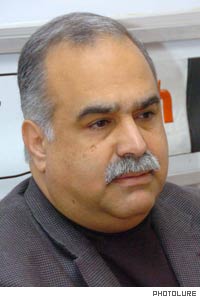

By Raffi K. Hovannisian
Governments and commentators have hailed the two recently-announced protocols between Turkey and Armenia. If signed and ratified, they will provide a timetable for the opening of the Turkish-Armenian border and the establishment of full diplomatic relations.
Unfortunately, the exuberance in Western capitals is based on energy routes, geopolitics and the desire to smooth the way for Turkey as a regional power and EU aspirant. It ignores the sinister aspects of the deal.
Certainly, Armenia has long pushed for an end to the Turkish blockade of Armenia, an open border and diplomatic relations with Turkey without precondition. This has also been the stated U.S. and European position.
This approach acknowledges that the Armenian-Turkish relationship is complicated and burdened by the Armenian Genocide. Open borders, diplomatic relations and people-to-people contacts must come first before Turkey and Armenia can begin to sort out a very difficult legacy, issues of restitution and reparations and to what extent Turkey should continue to enjoy the fruits of genocide.
The proposed protocols, however, will serve to meet two long-standing Turkish preconditions to normalization of relations with Armenia. The first is to forestall further progress in formal international recognition of the Armenian Genocide. The second is to confirm and help remove the juridical cloud from the Turkey Armenia frontier.
This frontier, which, under the Turkish blockade, is the last closed border in Europe, lacks legal status. It is an important issue for Turkey. The day after the protocols were announced, Turkey?s Foreign Minister stated that recognition of the current boundary was a basic element of the proposed agreements, without which, ?we cannot talk about being neighbors.?
Turkey?s strategy to shirk its obligations to Armenia under international law is to marginalize Armenia and to deny the Genocide, in which 1.5 million Armenians were killed and the survivors dispossessed of most of their 3,000 year-old homeland. Turkey uses its growing strategic and economic power to enlist American and European support for these initiatives. The offending provisions in the proposed protocols are part of this process.
Armenia is small, land-locked and vulnerable. It previously resisted Turkish preconditions to normalization. However, after elections marred by fraud and political violence, the current Armenian administration has been susceptible to Turkish, European and American pressure on this issue. Given the legacy of the Armenian Genocide, European and American roles in promoting, rather than objecting to, these preconditions is outrageous.
In the aftermath of the Armenian Genocide, President Woodrow Wilson fixed Turkey?s boundary with Armenia in an arbitral award issued under U.S. presidential seal. This remains the only binding demarcation of the Turkish-Armenian frontier in accordance with an agreement between sovereign and independent Turkish and Armenian states.
Although the de jure border and the award of these territories to Armenia continue to be legally valid, the 1920 invasion of Armenia by Kemalist and Bolshevik forces sealed these lands in Turkey and gave us the current de facto border.
The great irony is that a significant stretch of the energy and transport routes that are the sources of an emerging Turkish power pass through these territories, which were also the killing fields of the Armenian Genocide. The Baku-Tbilisi-Ceyhan oil pipeline and the parallel natural gas South Caucasus Pipeline do. So will the proposed Nabucco pipeline project. These territories and projects, so vital to Turkey?s goal to become a major international energy hub, are the fruits of genocide. And Armenia enjoys none of their political and economic benefits.
Sadly, open hatred of Armenians is everywhere in Turkey, in official and semi-official media, in the state school system, in state-sanctioned discrimination and elsewhere in and out of government.
Of course, the pinnacle of this hatred is genocide denial, which genocide scholars tells us constitutes the final stage of genocide. But consider the Turkish Defense Minister who asks rhetorically whether the present Turkish nation state would have been possible without the elimination of the Armenian population or the Turkish President who charges an opposition Turkish parliamentarian with defamation for alleging he has Armenian roots. Remember the murder of the Turkish-Armenian journalist, Hrant Dink, or the planned attacks on Turkish-Armenian community leaders by Ergenekon, the ultranationalist organization associated with what in Turkey is referred to as the ?Deep State.?
With the demonization of Armenians in Turkish nationalist ideology, an official policy of genocide denial and Ankara?s proven hostility to the reborn Armenian state, that the West does not actively oppose Turkish preconditions should give everyone pause.
The enduring legacy of the Armenian Genocide is not just a challenge for Turkey and Armenia. It is also a challenge for Europe and America. The West, despite growing Turkish power and influence, should encourage Turkey to take responsibility for the Armenian Genocide, not assist Turkey in compelling Armenia to agree to preconditions that humiliate the victimized party and prejudice the integrity and outcome of any future genuine reconciliation process between Turkey and Armenia.
Ultimately, the Turkish-Armenian conversation must include two thorny issues: first, to what extent Turkey should continue to enjoy the fruits of genocide and second, the integrity of the border it shares with Armenia.
Raffi Hovannisian was independent Armenia?s first minister of foreign affairs.
Read Armenian text here. “Armenia Now”, 24 September 2009
Photo from Photolur
